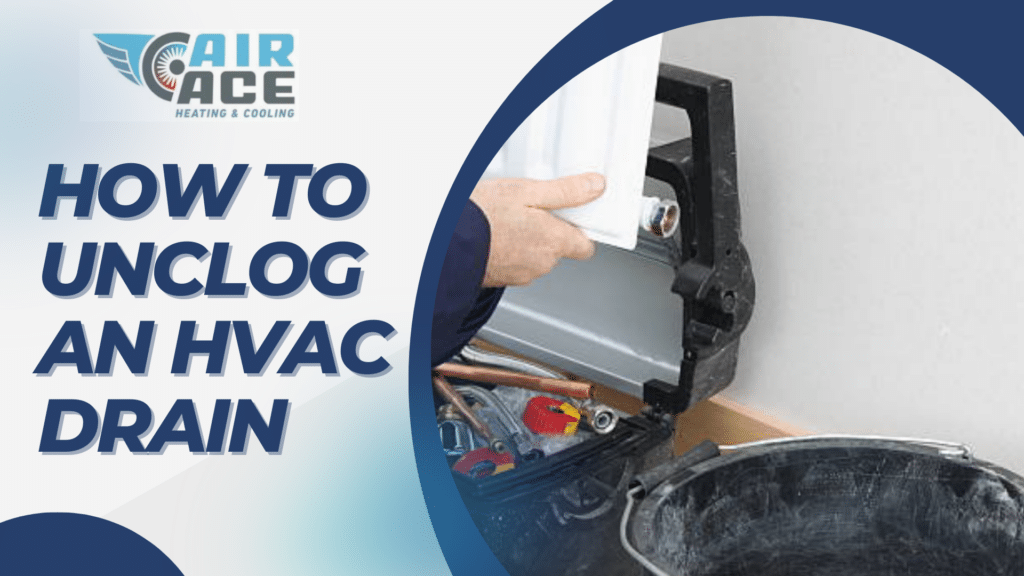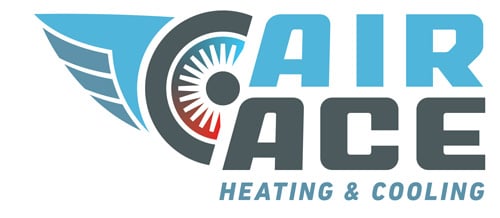How To Unclog an HVAC Drain

Easy Ways to Unclog an AC Drain:
Maintaining your air conditioning system is crucial for optimal performance, and a common issue many homeowners face is a clogged AC drain pipe or a clogged AC drain line. Neglecting this can lead to various problems, from reduced efficiency to potential water damage. This comprehensive guide will explore easy and effective steps to unclog your AC, drain lines, and pipe, ensuring your system operates smoothly.
Turn Off the AC’s Power
Before delving into the intricacies of unclogging an AC drain, the initial and paramount step is to turn off the power supply to the air conditioning unit. This preventive measure guarantees safety and minimizes the risk of electrical mishaps during maintenance.
What Happens if the AC Drain Line Keeps Clogging?

Understanding the consequences of a persistently clogged AC drain line is crucial for any conscientious homeowner. Suppose the air conditioner drain line is clogged and left unattended. In that case, this issue can result in water overflow, causing damage to the internal components of the AC unit, as well as potential mold growth. Regular air conditioner drain line maintenance is key to preventing such scenarios.
A Step-by-Step Guide to Unclogging Your AC’s Drain Line
Unclogging your air conditioner’s drain line is an essential maintenance task to ensure proper functioning and prevent water damage. Here’s a step-by-step guide to help you unclog your AC’s drain line:
Step 1 – Power Off the Air Conditioning Unit
As reiterated for emphasis, ensure the AC unit is completely powered down before commencing any maintenance task. Safety should never be compromised in the pursuit of efficiency.
Locate the Drain Line

The first tactical move in unclogging an AC drain line is identifying its location. Go outside to where the drain line exits your home. Locate the end of the PVC pipe and check for any visible clogs or obstructions. Use a pipe or tubing to dislodge any debris by gently pushing it through the pipe.
Typically, the AC drain line clogs are near the outdoor condenser unit. Once the ac drain line is clogged and the pipe is located, proceed with the systematic unclogging process.
Remove the Drain Line Cap
Delicately remove the drain pipe and line cap to expose the interior air and components. This step is vital as it grants access to the heart of the AC’s air drainage system, facilitating a thorough cleaning process.
Step 2 – Check the Drain Pan
The drain pan drains beneath the evaporator coil coils can accumulate standing water and debris. Inspecting the water pressure draining properly can prevent clogs and water overflow issues.
Signs of Clogged AC Drain Lines
Recognizing the signs of a clogged AC drain line is imperative for timely intervention. Look out for water stains on the ceiling, persistent musty odors, or decreased cooling efficiency. Identifying these symptoms early can prevent extensive water damage afterward.
Step 3 – Unclog the Clogged Condensate Drain Line
Use specialized tools or a combination of vinegar and warm water to delicately dislodge and remove the accumulated moisture and debris within the condensate drain pipe and line. This meticulous process ensures optimal moisture and drainage line efficiency.
How Often Should I Check the Air Conditioner Drain Line?
Regular maintenance is key to preventing clogs in your AC unit and drain line. Aim to inspect and clean the drain line at least once a month, especially during peak usage periods. This proactive approach ensures the continuous efficiency of your AC system.
How to Unclog Your Air Conditioner’s Drain Line

Now, let’s delve into the step-by-step process of unclogging your AC drain line, allowing you to restore optimal power and functionality to your cooling system.
Step 4 – Clean the Drain Line with Vinegar
To prevent future clogs and kill any algae or mold growth, mix a solution of 1 part bleach or vinegar with 1 part water. Pour this solution into the drain line from the access point inside your home.
White vinegar, with its acidic properties, serves as a natural cleanser for clogging in the inner linings of the drain line. Pouring a mixture of vinegar and water down the back AC’s drain line helps dissolve accumulated sludge, preventing future clogs and maintaining optimal drainage.
Step 5 -Check to see if the AC Is Working as Expected
After implementing the cleaning solutions, observe your air conditioning unit in action. Ensure the cool air flows consistently, and monitor the drainage process. This step verifies the effectiveness of your efforts, providing peace of mind and a well-functioning AC system.
Step 6 – Finish Up
Concluding the unclogging process involves a series of meticulous steps. Reattach the drain line cap securely, vacuum the hose, check for any residual standing water or water leakage anywhere, and prepare for the final validation of your clog-up efforts.
Finish Off With a Drain Pan Test
Performing a drain pipe cleaner pan test ensures that any other clog or residual issues are addressed. This step involves checking for leaks or excess water in the drain pipe, wet vacuum cleaner, and pan, providing a final confirmation of a successfully unclogged drain line.
Reattach the Drain Line Cap
Securing the drain line cap is a crucial final step in the home AC system. This ensures the integrity of the air conditioner and the unclogged drain line and prevents any excess moisture, future debris, or contaminants from entering the AC units.
Test Your AC Unit
Conduct a final operational test of your air conditioning unit. Listen for unusual sounds, check for optimal cooling performance, and ensure the drainage system functions properly and seamlessly. This meticulous approach guarantees that your AC unit is in prime condition.
Please monitor the drain line for the next few days to ensure there are no leaks. If you notice any issues, please address them promptly.
Can a clogged drain line turn off my AC?
The answer is affirmative: a clogged drain line can indeed lead to the automatic shutdown of your air conditioning unit. The accumulation of water and other particles within the air conditioning system also triggers safety mechanisms that disable the whole AC system to prevent further damage to standing water throughout. As this guide outlines, regular maintenance is the key to avoiding such inconveniences.
How to Clear an AC Drain Line With a Garden Hose
A garden hose can be an effective solution for stubborn clogs. Gently insert the hose into the clogged drain line and allow a controlled stream of water to dislodge and flush out any remaining debris. Exercise caution to prevent damage to the internal components.
Remove the Drain Line Cap

Before using a garden hose, remove the drain line cap. This step facilitates a more thorough cleaning process.
Test Water Flow Through the Drain Line
Using a garden hose, gently introduce water into the condensate drain line to flush and vacuum out any remaining debris. This step helps with visible debris and ensures the pipe has a clear, unobstructed air pathway for condensation drainage.
Conclusion
The meticulous process of unclogging an AC drain line is crucial in HVAC system maintenance. By following the steps outlined in this comprehensive guide, homeowners can effectively ensure the longevity of their AC drain lines and optimal performance within their air conditioning units. Regular inspection and proactive measures serve as the cornerstones of a smoothly running air conditioning system, helping to prevent potential damage and ensuring a consistently cool and comfortable indoor environment.
Proper maintenance of AC drain lines is of utmost importance because clogged or blocked drain lines can lead to various problems. When the drain line becomes obstructed, the excess moisture accumulating in the air conditioning unit cannot be effectively drained away. This can result in water leakage, damaging the surrounding areas, such as walls, ceilings, and floors. Additionally, the excess moisture can create a breeding ground for mold and mildew, leading to potential health hazards for the occupants of the building.
By adhering to the comprehensive guide provided, homeowners can effectively prevent these issues and maintain the optimal performance of their air conditioning units. The first step is regular inspection. Homeowners should periodically check the AC drain line for any signs of clogging or blockage. This can be done by visually inspecting the drain line for standing water or any unusual leaks.
This article was originally posted by AirAce Heating & Cooling.
